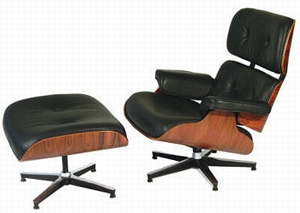
I’m going to let industrial designer Eliot Noyes inform me a bit about course design, as I watch Alec Couros design his #etmooc open class by using a Google Group. Alec was one of the very first to offer open online classes, by offering a regular class to his teacher education students, but opening the class to the world to participate. I took Alec’s EC&I831 as an enrolled student, partly to learn from him, partly to get credit I needed to advance on the salary schedule, and partly to be part of an open class from the “inside” and study the class design.
Since then I’ve designed the POT Certificate Class, and have abandoned the MOOC idea (or at least what it has become) in order to do what we want to do. Similar to Alec’s initial design, we have a core group of “students” (even though they are non-credit) and a surrounding “community” of helpers and mentors.
 I have watched the designs of the big MOOCs evolve into three models, and for a task-based open class I have concluded this is the best design for us. The course is aimed at a particular group – we’ve been calling them newbies or novices but it might be more accurate to consider them as teachers or trainers who have been limited in their experience using the web for teaching. This might be because they’ve been forced to use an LMS, or because they do not participate in their own online networks related to their teaching. Either way, they spend their time making lesson plans and teaching, not participating in MOOCs.
I have watched the designs of the big MOOCs evolve into three models, and for a task-based open class I have concluded this is the best design for us. The course is aimed at a particular group – we’ve been calling them newbies or novices but it might be more accurate to consider them as teachers or trainers who have been limited in their experience using the web for teaching. This might be because they’ve been forced to use an LMS, or because they do not participate in their own online networks related to their teaching. Either way, they spend their time making lesson plans and teaching, not participating in MOOCs.
POT’s organizers and facilitators have made the decisions about course design for the POT Cert Class, and there is a centrality to that role of facilitator that I think is important. (I have never been a fan of instructional designers creating courses for others to teach, because I believe that the process of class design is an inherent part of teaching.)
At the root of the POT Certificate Class is the idea that the individual instructor determines his/her own pedagogical approach, articulates it, then realizes it in the online environment through various technologies. The class reflects its own goals about what we want our participants to become, designers of learning experiences for their students. So…
Good design:
1. Fulfills its function
This wouldn’t work with a free-for-all design, since its function it to offer a guided experience. Teachers do not naturally examine and articulate their own pedagogy. That is the first step. They also may not know which articles or videos might be beneficial in their process of realizing this pedagogy. While open exploration could ultimately lead to these goals, most of our participants are busy professionals who have limited web experience. They seem to benefit from guidance and structure at first, then interpreting the usefulness of the proffered sources themselves, and then having the freedom to choose both tools and method.
2. Reflects its materials
In this case, the “materials” would be the affordances of the open web, which is why assignments are not limited to particular technologies – there are many that work, depending on the teachers’ goals. (A closed online class in online pedagogy offered inside an LMS would be an example of a course that does not to reflect the “materials” of the web.)
3. Is suited to method of production
While we don’t have a “product”, we do have a certificate that is based on the idea of full engagement and exploration through the curriculum. This engagement is demonstrated through weekly tasks and reflection, posted on their blogs. In furniture design, the design must take into account the manner in which the final product will be (usually mass-) produced. Although mass production of certificates (or certificate holders) is not the goal, the quality of each participant’s experience must be grounded in the method, in this case guided exploration, reflection and the creation of artifacts.
4. Combines these in imaginative expression
 In some MOOCs, the imaginative expression is the entire point of the class. In the POT Cert Class we provide the framework through the curriculum, but when participants create their artifacts each week (blog posts, videos, audio files, etc) they are combining the function, materials and method by creating their own works in pursuit of their pedagogical goals.
In some MOOCs, the imaginative expression is the entire point of the class. In the POT Cert Class we provide the framework through the curriculum, but when participants create their artifacts each week (blog posts, videos, audio files, etc) they are combining the function, materials and method by creating their own works in pursuit of their pedagogical goals.
While this may seem instructor-centered, both in the facilitation of the course itself and the objectives we have for participants, the ultimate goal is always effective learning for our students. As with teacher education and faculty communities, the goals can best be achieved by teachers engaging in course design. Charles and Ray Eames designed their chair, but it’s the person who has it in their living room who benefits from its aesthetics and comfort.
I think Noyes’ elements are as useful for course design as they are for furniture design.
Image source: http://images.businessweek.com/ss/07/01/0127_eliot_noyes/source/2.htm